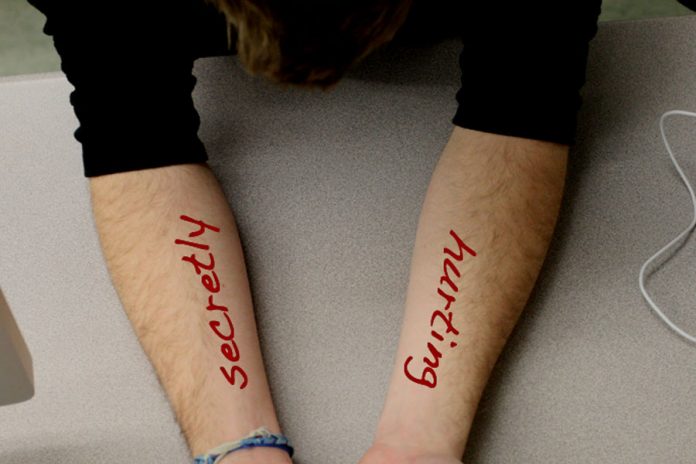When dealing with overwhelming stress, students sometimes turn to self-destructive behaviors, such as drinking, smoking or drugs. Some habits are more subtle than others, however. Some students, when dealing with emotional pain, make the pain manifest physically by doing harm to their own bodies, a practice known as self-injury.
Self-injury is commonly known as cutting, though there are a variety of ways self-injury may be practiced.
Due to the sensitive and highly personal nature of this problem, no students who are, or have been, self-injurers were willing to be interviewed. However, Dr. Chris Cubero, a counselor at the Student Counseling Center has shared his professional experience.
Dr. Chris Cubero is primarily a substance abuse counselor, but he has also worked with students dealing with the habit of self-injury.
“For some, it is an escape in some way like drugs can be for people,” Cubero said. “For some it’s an indication that yes, I am here, I do exist, I am. I can escape the numbness by feeling. That is the reward for some people. And people who get more into it, it’s more difficult to help them have different coping mechanisms.”
Dr. Cubero said that the motivations for self-injury are as varied as the individuals who do it.
“Some people I have worked with will use it to deal with emotions,” Dr. Cubero said. “That can vary and is very individualized. Some students may be feeling numb, for instance, and want to feel or want to know that they’re still alive in some sense and so the cutting can give you that. For some, it is a pre-suicidal type of behavior.”
According to Helpguide.org, a non-profit resource, self-injury is not the same as a suicide attempt, although self-injurers are at a higher risk for suicide in the long run. Dr. Cubero confirmed that self-injury is not necessarily indicative of suicidal behavior, though it can be a sign of contemplating suicide.
Dr. Cubero also said that the methods of self-injury are varied and have vastly different degrees of harm and intensity.
“It can manifest in rubbing, like the eraser of a pencil, like a burning,” he said. “There are rare cases of people swallowing razor blades, swallowing metal. Drinking solvents is another form. I guess any conceivable way you could commit suicide, because sometimes self injury is related to that, you could essentially say that those possibilities are there as well.”
Dr. Cubero said that use of firearms for self-injury is very rare and that usually when a person uses such lethal means, it is a suicide attempt rather than self-injury.
Means of treatment for this problem vary as well, as the various types of injury can be signs of what motivates the behavior.
“Another thing that is deciphered clinically is where the cutting occurs,” Cubero said. “Some people will cut in places where it cannot be seen, and others will cut in places that can be seen. There’s usually differences in what can be worked on with people, depending on which method or what are the desires behind it. The cutting is a degree of what’s going on internally for that person.”
Once the motivation for the desires are determined, the method of treatment usually involves replacing the self-injurious behavior with better coping mechanisms.
“Sometimes it is about getting more in touch with the urges to do that and finding other methods of coping,” Cubero said. “Coping skills training can sometimes be assisting in that way. The behavior is placed with some other way of coping. Students can recognize when they may be getting close to doing that and practice different behaviors. That can be an option.”
Self-injury can also be treated similarly to the treatment of alcoholism or drug-addiction. There are even 12-Step groups for self-injury, according to Cubero.
“It depends on the clinician’s background,” he said. “My background is in addiction counseling and I sometimes will look at it in terms of craving and desire to cut and the urge. Just like there’s a desire to use a drug or alcohol to escape or whatever reason that would be.”
Dr. Cubero also said that the motivations for self-injury can be similar to other self-destructive behaviors, such as eating disorders.
“It can be a control type of thing,” he said. “The control thing comes up for me when I work with people who have eating disorders. Like the one thing in their life that they have power over is what they put into their body. In that same sense is the one thing I have power over is what I do to my body. So that relationship could be there for individuals too.”
Dr. Cubero concluded that while the behavior of self-injury may be easily recognized, there is no easy answer for the causes and motivations of the behavior.
“Sometimes it’s related to a mood or a depressive symptom,” he said.” Sometime it’s anxiety related. And sometimes it’s not related to either of those. It’s very individualized and even though I know some things about it and directions it can go, I reallly need to talk to that person and see what it means for them.”








